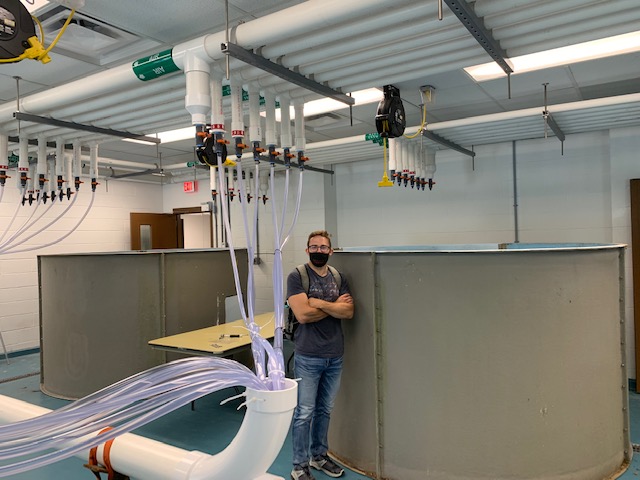Reducing Ocean Acidification and the Atmospheric Carbon Dioxide Concentration
Continually increasing carbon dioxide concentrations in the atmosphere have already led to changes in the climate as well as the acidification of the oceans. This increased acidity of the oceans is analogous to a slow motion “spill” of acid. And just like we clean up after oil spills, we need to clean up this acid spill as well.
 |
| Professor Matthew Eisaman |
The approach of ECE’s Prof. Matthew Eisaman and a team of researchers, called SEA MATE, which stands for Safe Elevation of Alkalinity for the Mitigation of Acidification Through Electrochemistry, uses carbon-free electricity and electrochemistry to effectively pump this excess acid out of the ocean and then sells the acid for useful purposes. This acid removal restores the ocean chemistry such that the remaining ions in the ocean react with atmospheric carbon dioxide, safely locking it up for 10,000 – 200,000 years as oceanic bicarbonate. So the net effect of SEA MATE is the reversal of ocean acidification along with the net removal of carbon dioxide from the atmosphere.
It is very likely that early deployments will be in partnership with existing marine industries such as seawater desalination, aquaculture, maritime transport, and offshore wind. As an example, performing the SEA MATE process on the waste effluent from desalination plants would provide value to the desal plants by reducing its environmental impact, while also mitigating ocean acidification and decreasing the concentration of atmospheric carbon dioxide.
For SEA MATE to make a significant impact at a global scale, it needs to be low-cost and have no negative environmental impacts. SEA MATE aims to achieve this by simplifying the process to its bare essentials and focusing on restoring, not changing, ocean chemistry. The research and testing over the next year is designed to verify SEA MATE’s electrochemical performance, its safety for marine life, and its cost. If all goes well, commercialization will likely start in around a year from now.
SEA MATE is led by Prof. Eisaman at Stony Brook University, and the Stony Brook group is responsible for the technology development and testing. His colleague Dr. Brendan Carter at the University of Washington and the National Oceanic and Atmospheric Administration (NOAA) is leading the modeling effort. Stony Brook University’s School of Marine and Atmospheric Science (SoMAS) Ph.D. student Nathan Hirtle is a research assistant on the project helping with experiments to quantify the seawater chemistry of the process. The team is also in the process of hiring one postdoc at Stony Brook and another at the University of Washington. In addition, the team has contracted with a wide array of organizations to help with topics such as the techno-economic analysis, life cycle analysis, and integration with existing marine industries, among others.
 |
| PhD student Nathan Hirtle at Flax Pond Marine Lab. |
This project is made possible by the vision and support of the Grantham Foundation for the Protection of the Environment. Importantly, through a partnership between the Grantham Foundation and Ocean Visions, Inc., SEA MATE has been paired with a world-class team of technical advisors who are providing critical feedback and really allowing the team to turbocharge their research and development process.
Prof. Eisaman’s training is in physics and he is a professor in the Electrical & Computer Engineering Department in the College of Engineering and Applied Sciences (CEAS). Part of the project will take place using facilities and students from the School of Marine and Atmospheric Sciences (SoMAS). As mentioned, Prof. Eisaman is hiring a postdoc who ideally has experience with both engineering and oceanography. Prof. Eisaman’s personality and research interests have always been very interdisciplinary, as is the SEA MATE project itself. Stony Brook has certainly accommodated this approach.
Prof. Eisaman been working on research related to this topic for about ten years. He thinks we are now at the point where the technology readiness and the societal need make the deployment of processes like SEA MATE feasible. This is indeed excellent environmental news.
